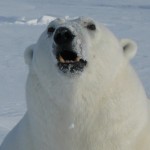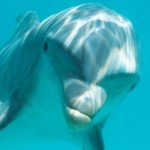The Williams ICE Lab is dedicated to studying the comparative ecophysiology and exercise physiology of humans and the largest, most endangered mammals to walk on land and swim in the oceans. Specifically, Dr. Williams and her students investigate the energetic, thermal, cardiovascular, neural and biomechanical biology of human athletes and apex predators including African lions, pumas, tropical dolphins and seals, sea otters, and polar-living wolves, whales, bears and seals. By examining the functional relationships between humans, animals and their environment, we strive to understand the ecological significance of a species and the physiological adaptations necessary for survival in a constantly changing world.
CANIDS
How does the biology of wild dogs differ from that of wild cats?
We investigate free-ranging behaviors and energetic demands of canids such as wolves in order to provide both researchers and wildlife managers with a greater understanding of the links between carnivore habitat, prey requirements, and movement patterns.
MARINE MAMMALS
Does oceanic noise pollution cause dolphins and whales to strand?
The marine mammal program is conducting comparative studies around the world on cetaceans (dolphins, narwhals), pinnipeds (Weddell seals, Hawaiian monk seals), sirenians (West Indian manatees), and sea otters. Our goal is to examine the physiological and behavioral responses to anthropogenic disturbance.
Neuroprotection News
In the News
- Polar bears on a treadmill: Why scientists wanted to test their walking metabolism
- Manatees on the move: Mote’s manatees burn a few calories for conservation science
- What cameras on polar bears show us: It’s tough out there
- The flight of the narwhal: Melting sea ice is stressing out narwhals
- Magnetic personality? Scientists investigate how Weddell seals navigate under sea ice
- Dogs, cats, and big wave surfers: Healthy heart lessons from animals and athletes
Recent Publications





